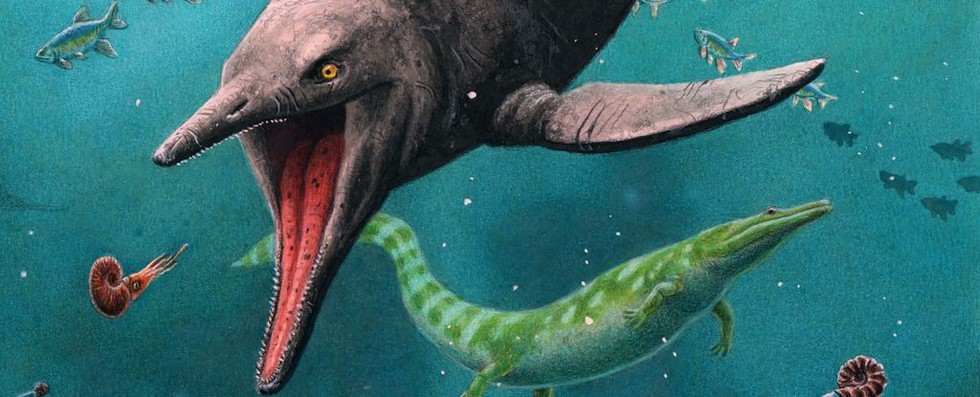About Ichthyosaurs:
- Ichthyosaurs were a group of animals that strongly resembled modern dolphins.
- They evolved from land-dwelling creatures that returned to the sea in the Early Triassic, thriving until the late Cretaceous.
- A changing climate and slowness to adapt brought their time to an end around 95 million years ago.
- These reptiles quickly adapted to life in the water: their legs turned to fins, their snouts elongated and filled with fish-snatching teeth, and their bones became spongy like those of modern cetaceans.
- It was fully adapted to life as a marine reptile within 2 million years of the final days of the End-Permian Mass Extinction.
What is Permian Mass Extinction?
- It is also called the Permian-Triassic extinction, a series of extinction pulses that contributed to the greatest mass extinction in Earth’s history.
- Many geologists and palaeontologists contend that the Permian extinction occurred over the course of 15 million years during the latter part of the Permian Period (299 million to 252 million years ago).
- This event ranks first in the severity of the five major extinction episodes that span geologic time.
Key facts about Spitsbergen Island
- It is the largest island in the Svalbard archipelago,
- It is the only permanently inhabited part of Svalbard.
